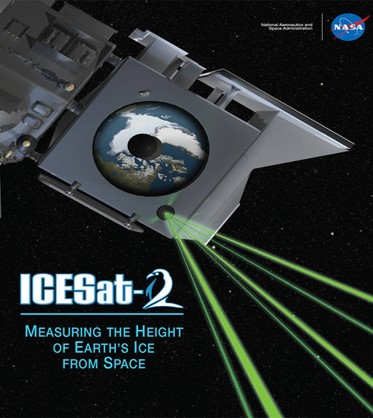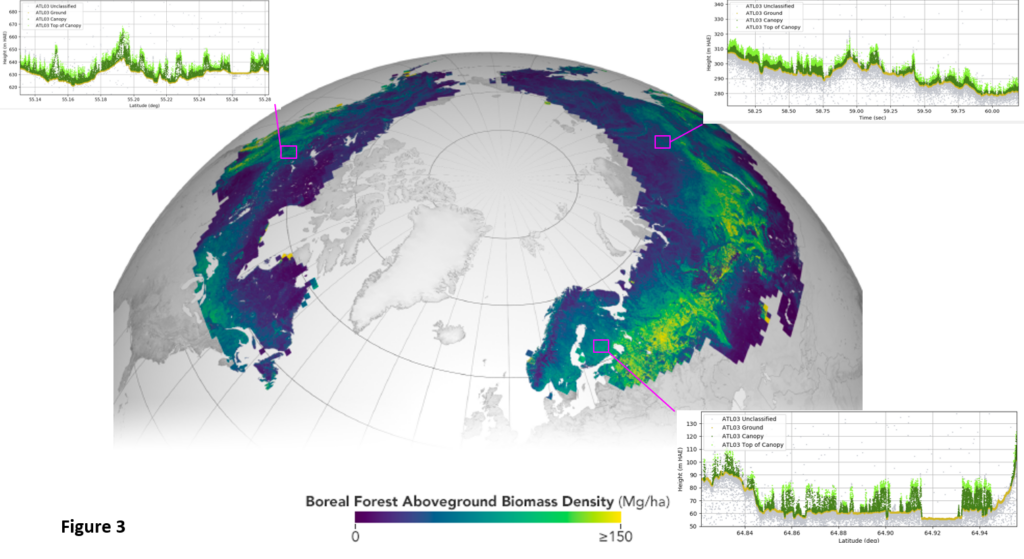Ice, Cloud, and land Elevation Satellite 2 (ICESat-2)

Satellite altimetry systems keep an eye on Earth’s environment from space, monitoring changes in the heights of ice sheets, glaciers, and forest canopies to record the effects of a changing climate. One such system, NASA’s Ice, Cloud, and land Elevation Satellite 2 (ICESat-2), was launched successfully on 15 September 2018, and is currently collecting critical measurements of the Earth system.
The cutting-edge lidar technology aboard ICESat-2 is optimized for the polar regions, where observations help researchers evaluate the current state of our ice sheets and sea ice. The satellite’s global coverage also delivers high-resolution measurements of tree heights, inland water reservoirs, cloud characteristics, and oceans, improving our knowledge of biomass estimates, water storage, atmospheric heat flux, nearshore bathymetry and sea level. Since ICESat-2’s launch, data not only have met expectations but also provide a window into other potentially transformational science discoveries.
 The efforts in research and development associated with ICESat-2 at UT Austin support a broad range of technical applications and analysis. The team has been involved since 2014 in the mission concept development and implementation studies. We have worked on the airborne simulator for ICESat-2 and designed critical validation strategies to ensure the data quality once on-orbit.
The efforts in research and development associated with ICESat-2 at UT Austin support a broad range of technical applications and analysis. The team has been involved since 2014 in the mission concept development and implementation studies. We have worked on the airborne simulator for ICESat-2 and designed critical validation strategies to ensure the data quality once on-orbit.